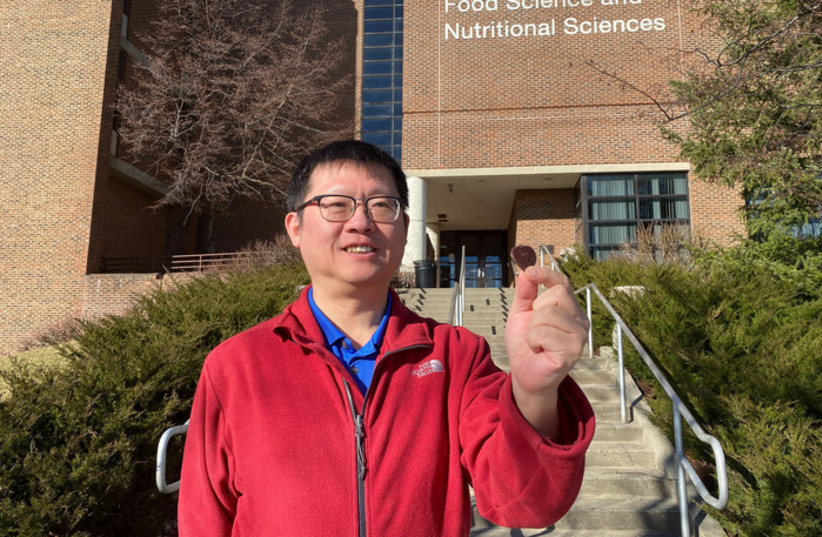A food scientist at Rutgers University in New Jersey has used a 3D printer to introduce low-fat chocolate in any shape a person could think of – the first in a line of what he calls “functional foods.” Prof. Qingrong Huang in the department of food science at the university’s School of Environmental and Biological Sciences is already working on manipulating the sugar content in the new chocolate formulation for low-sugar and sugar-free varieties.
The work heralds what the researcher hopes will be a new line of “functional foods” – edibles specially designed with health benefits. The aim is to develop healthier kinds of chocolate easily accessible to consumers, said Huang, who reported on his and his team’s invention in the scientific journal, Food Hydrocolloids under the title “Development of fat-reduced 3D printed chocolate by substituting cocoa butter with water-in-oil emulsions.”
“Everybody likes to eat chocolate, but we are also concerned with our health,” he said. “Three-dimensional printing of chocolate is an important and special area in food printing. Unlike other food materials such as fruits and meats, 3D extrusion printing of chocolate normally involves the melting and recrystallization of cocoa butter, thereby requiring accurate control of both thermal and fluid conditions during the printing process.”
“Three-dimensional printing of chocolate is an important and special area in food printing. Unlike other food materials such as fruits and meats, 3D extrusion printing of chocolate normally involves the melting and recrystallization of cocoa butter, thereby requiring accurate control of both thermal and fluid conditions during the printing process.”
Qingrong Huang
How do you 3D print low-fat chocolate in different shapes?
Researchers create emulsions by breaking down two immiscible (incapable of mixing) liquids into minute droplets. In emulsions, the two liquids will usually quickly separate – as is the case with oil and vinegar – unless they are held together by a third, stabilizing ingredient known as an emulsifier. For example, an egg is the emulsifier in a vinaigrette dressing.
Chocolate candy is generally made with cocoa butter, cocoa powder and powdered sugar and combined with any one of a variety of different emulsifiers. For the study, the scientific team experimented with different ratios of the ingredients for a standard chocolate recipe to find the best balance between liquid and solid for 3D printing.

Seeking to lower the level of fat in the mixture, they created a water-in-cocoa butter emulsion held together by gum arabic, an extract from the acacia tree that is commonly used in the food industry, to replace the cocoa butter. The researchers mixed the emulsion with golden syrup to enhance the flavor and added that combination to the other ingredients.
As delightful as it is to eat, Huang said, chocolate is a material rich with aspects for food scientists to explore. Using advanced techniques examining the molecular structure and physical properties of chocolate, the team investigated the printed chocolate’s physical characteristics. They were seeking the proper level of viscosity for printing and looking for the optimal texture and smoothness “for a good mouthfeel.” Experimenting with many different water-oil ratios, they varied the percentages of all the main ingredients before settling on one mixture.
In 3D printing, a printer is used to create a physical object from a digital model by laying down layers of material in quick succession. The 3D printer and the shapes it produces can be programmed by an app on a cellphone, Huang said.
Ultimately, Huang said he plans to design functional foods containing healthy added ingredients – substances he has spent more than two decades studying such as extracts from orange peel, tea, red pepper, onion, rosemary, turmeric, blueberry and ginger – that consumers can print and eat. “3D food printing technology enables the development of customized edible products with tailored taste, shape and texture as well as optimal nutrition based on consumer needs,” Huang said.
